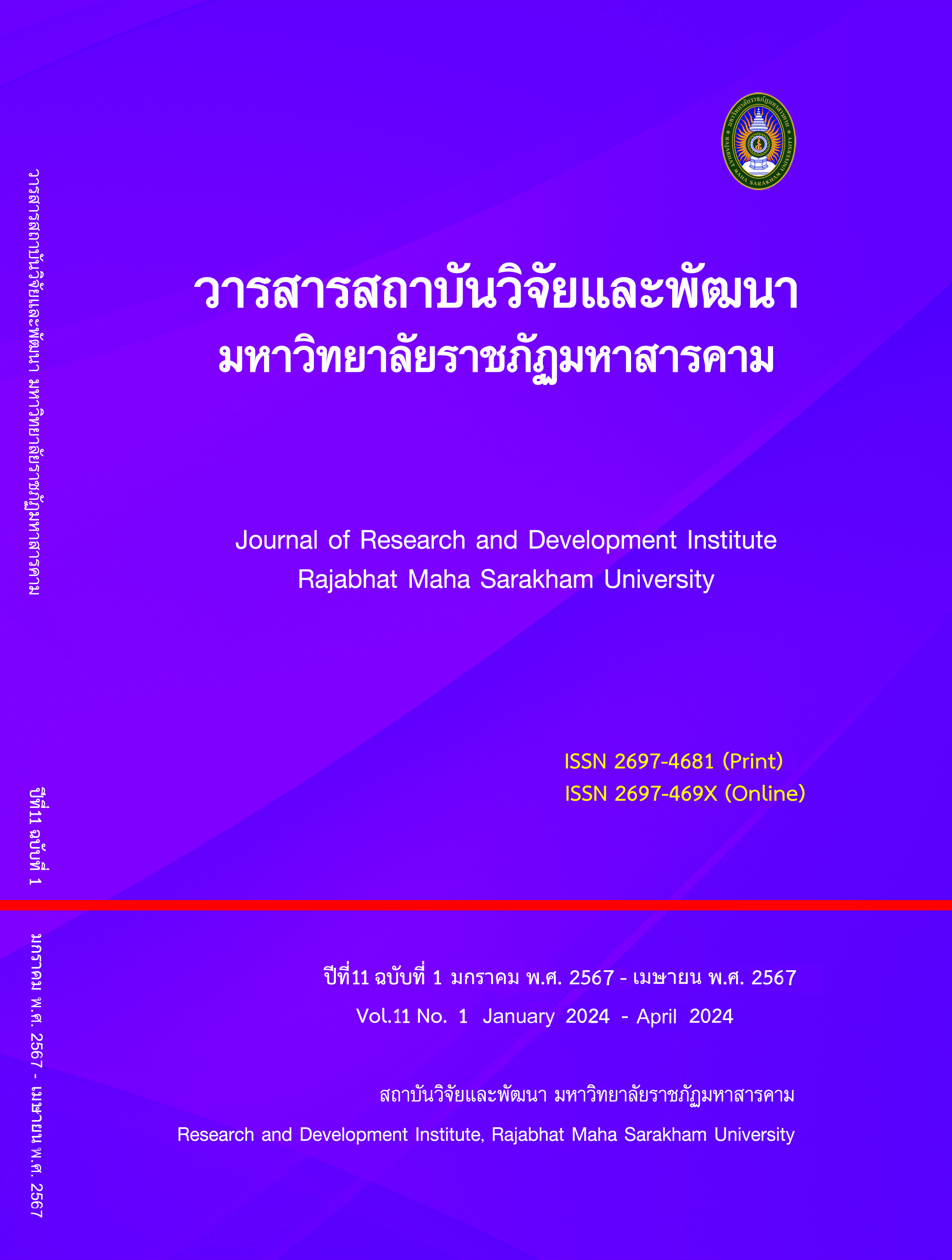Problems, obstacles and approaches affecting the development of solar Cell of the manufacturer
Keywords:
Problems and obstacles, development, Solar CellAbstract
from the global warming problem that has resulted in the degradation of resources and the increasing demand for energy continuously. The use of renewable energy from solar energy is both a strength and an opportunity for development. because it is suitable for Thailand Because it is closer to the equator that receives more sunlight than other regions of the world. And solar energy is a non-perishable energy and does not generate carbon dioxide. Therefore, the development of solar power producers is important.
From the analysis of problems and obstacles affecting the development of solar power generation by manufacturers, it was found that there were problems and obstacles at the upstream, midstream and downstream levels. in the role of the agency People still do not see the importance and lack of participation Lack of continuous research and development Entrepreneurs lack confidence in the energy business an increase in the demand for energy in all sectors of the economy the problem in the middle of the water or process (Process) consists of space constraints Power capacity that varies with the weather Production and maintenance costs are high. The limitations of the transmission line system. cost-effectiveness risks, disasters, economic recession emerging epidemic personnel management and downstream problems, namely output, output and impact, such as the discontinuity of the development of a model community for using solar energy environmentally friendly projects Failure to build understanding with the community Lack of experts at the community level the lack of sincerity in business operations affects the confidence of the people and consumers. From the problems and obstacles found, the model for the development of solar power generation of manufacturers consists of 7Ps (7Ps Model), including Policy Public Participatory. Process Product Place and People.
References
King Mongkut's University of Technology Thonburi. (2018). Monitoring the status of electricity production from Solar energy in Thailand. Bangkok: Department of Alternative Energy Development and ConservationEnergy Ministry of Energy.
Kittipuwadon, S., Khamprasert, K., Intaraphadung, A. & Chankwang, P. (2022). Strategy for developing a management model for electricity production with solar energy. on the roof by entrepreneurs and household users Khan Na Yao area Bangkok. journal of Modern Learning Development, 7(2), page 301.
KM Working Group, Solar Energy Development Agency. (2011). Innovation feasibility study.in investing in renewable energy (Case study of solar energy generating electricity). Bangkok: Department of Alternative Energy Development and Energy Efficiency.
Panjaputtanon, C. & Sonsuphap, R. (2016). Problems and obstacles of development. Electrical energy from solar energy in Thailand. VRU Research and Development Journal Social Sciences, 12 (11) : 11-12.
Siwapitak, S. (2011). Innovation management of business organizations that affects creativity. Bangkok : Dhurakij Pundit University.
Somnuk Uejirapongphan et al. (2010). Innovation: Meaning, Types, and Importance for Entrepreneurship. Journal of Business Administration and Languages (JBAL), 33(128), pp. 50-55.
Sridan, P. (2019). Renewable energy and guidelines for sustainable energy development. Bangkok : Chulalongkorn University.
Sridaranon, N., Wisitsak, S. & Kedari, J. (2018). Concepts for developing innovations in using solar energy for buildings in the humid tropics. Built Environment Inquiry, 17 (2) : 12-13.
Wisutthipranee, N. (2017). Guidelines for managing solar energy production systems according to the philosophy of sufficiency economy in the community. Singburi Province. Master of Science Program Thesis (Environmental Management) Faculty of Environmental Development Administration National Institute of Development Administration.
Downloads
Published
How to Cite
Issue
Section
License
Copyright (c) 2024 ชญาณิศา ฐาณิชญาณัณ, ชัชวาล แสงทองล้วน, กาญจนา พันธุ์เอี่ยม

This work is licensed under a Creative Commons Attribution-NonCommercial-NoDerivatives 4.0 International License.
Articles that are published are copyrighted by the authors of the articles







